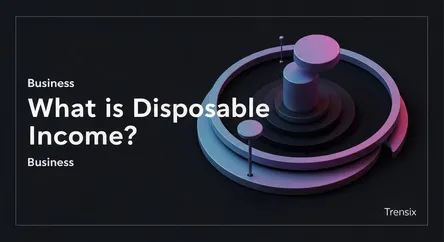Business
What is Disposable Income?

Discover what disposable income is, why it's a key economic indicator, and how it directly impacts your financial health and purchasing power.
What is it?
Disposable income is the amount of money that a household or individual has available for spending and saving after income taxes have been paid. It's often referred to as 'take-home pay.' To calculate it, you simply subtract all required income taxes from your gross income. This figure is a crucial measure of financial health, as it represents the actual money available to cover necessary expenses like housing, food, and transportation. It's important not to confuse it with discretionary income, which is what remains after both taxes and essential living expenses have been paid.
Why is it trending?
Disposable income is a major economic indicator that analysts and policymakers watch closely. It's trending because it directly reflects the purchasing power of consumers, which drives a significant portion of economic activity. Discussions around inflation, wage growth, tax policy changes, and interest rates all center on their impact on disposable income. When disposable income rises across the population, it can signal economic growth, while a decrease can suggest a slowdown. It's a key metric for understanding the real-world financial state of a country's citizens.
How does it affect people?
On a personal level, disposable income determines your standard of living. It dictates how much you can afford to spend on necessities and whether you have anything left over for savings, investments, or non-essential items like entertainment and vacations. A higher disposable income provides greater financial flexibility and security, allowing individuals to build wealth and handle unexpected expenses more easily. Conversely, when it shrinks due to rising taxes or inflation outpacing wage growth, households feel the squeeze, forcing them to make difficult choices about their budget and spending habits.